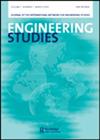Innovation, Revolution, Change … and Stasis
IF 1.3
3区 工程技术
Q2 EDUCATION, SCIENTIFIC DISCIPLINES
引用次数: 0
Abstract
A new year, a new volume of Engineering Studies. Fittingly, our thirteenth volume arrives at a rather inauspicious time. As my editorials for volume 12 indicate, the past year has been tumultuous – a year of constant upheavals from every direction. Yet one of the frustrations of the past year is that, despite all the tumult, toomuch has stayed the same. Inmanyways, constant change has created a new world that is just like the old one, only more so and in some of the worst ways. The feeling thatwe are stuck on a treadmill where both everything and nothing changes applies to many domains of social life, but since this is a journal of engineering studies I’ll stick to areaswhere engineers andengineeringplay some role. Yet engineers andengineering are so ubiquitous that that hardly limits my scope. To start with, the ‘tech industry’ – i.e. firms that seek to associate themselves with engineering expertise – has had another very goodyear, evenasother firmsandmany individuals haveexperiencedevenmoreeconomic precarity than usual.1 The wealthy people at the head of the tech industry have become far wealthier, exacerbating inequalities that were already problematic before the pandemic began.2 Demand for certain highly-engineered products such as semiconductor chips has surged because of the pandemic, further widening that gap (in political influence, profits, and cultural standing) between old-line manufacturing firms (particularly in the auto industry) and ascendant ‘tech’ companies like Apple.3 Meanwhile, employers’ long campaign to blur any distinction between ‘work’ and ‘life’ has only been accelerated by the pandemic. Those who can’t (or aren’t allowed to) work fromhome risk their lives byperforming their jobs;while for thosewhocanwork fromhome the distinction between work and non-work is increasingly irrelevant. And that switch to working from home is predicated on employees’ use of engineered technologies of both telepresence and surveillance. Indeed, the technologies that monitor whether employees are constantly working and students are continuously paying attention reinforce longstanding modes of surveillance and control.4 In some cases those technologies even latch onto very old ideas from phrenology!5 Indeed, we are in something of a phrenological moment, since that movement was foundational for criminology, eugenics, and the statistics underlyingmachine learning algorithms – i.e. the technical fields concernedwith some of the past year’s most-contested arenas.6 Fittingly, then, this issue of Engineering Studies is about change – and related keywords such as innovation and revolution – but it is also about stasis and the persistence of old wine in new bottles. That makes all of issue 13.1 a small and hardly adequate tribute to the scholar memorialized in Dominique Vinck’s opening obituary, Benoît Godin. For a certain segmentof our readers, Godinwas a trulymassivepresencewhodidmuch to stem the flood of uncritical innovation discourse with a dose of much-needed skepticism. Other readers, though, might not know Godin’s intellectual histories of the concept of innovation and of创新、革命、变革 … 和瘀血
新的一年,新的一卷《工程研究》。正好,我们的第十三卷来得不是时候。正如我在第12卷的社论中所指出的,过去的一年是动荡的一年——从各个方向不断发生动荡。然而,过去一年的挫折之一是,尽管发生了所有的动荡,但太多的事情保持不变。在许多方面,不断的变化创造了一个与旧世界一模一样的新世界,只是在某些最糟糕的方面更像旧世界。我们被困在跑步机上,一切都没有改变,这种感觉适用于社会生活的许多领域,但由于这是一本工程研究杂志,我将坚持在工程师和工程发挥作用的领域。然而,工程师和工程无处不在,这几乎不会限制我的研究范围。首先,“科技行业”——即那些寻求与工程专业知识联系在一起的公司——又度过了一个非常好的一年,尽管其他公司和许多个人经历了比平时更严重的经济不稳定科技行业的富人变得更加富有,加剧了在疫情开始前就已经存在的不平等问题由于疫情,对半导体芯片等某些高度工程化产品的需求激增,进一步扩大了传统制造公司(尤其是汽车行业)与苹果等新兴“科技”公司之间(在政治影响力、利润和文化地位方面)的差距。与此同时,雇主们模糊“工作”和“生活”之间任何区别的长期努力,只会因疫情而加速。那些不能(或不被允许)在家工作的人冒着生命危险完成工作;而对于那些可以在家工作的人来说,工作和非工作之间的区别越来越无关紧要。而这种向在家办公的转变是基于员工使用远程呈现和监控等工程技术。事实上,监控员工是否一直在工作和学生是否一直在集中注意力的技术加强了长期存在的监视和控制模式在某些情况下,这些技术甚至借鉴了颅相学中非常古老的思想!事实上,我们正处于一个颅相学的时刻,因为这一运动是犯罪学、优生学和机器学习算法背后的统计学的基础——也就是说,与去年一些最具争议的领域有关的技术领域因此,这一期《工程研究》是关于变化的——以及创新和革命等相关关键词——但它也关于停滞和新瓶装陈酒的持久性。这使得第13.1期的所有内容都是对多米尼克·温克(Dominique Vinck)的开篇讣告贝诺·戈丁(benot Godin)所纪念的学者的一个小小的、几乎不充分的敬意。对于我们的一部分读者来说,戈丁是一个真正的大规模存在,他用一剂急需的怀疑主义来遏制不加批判的创新话语的洪流。然而,其他读者可能不知道戈丁关于创新和创新概念的思想史
本文章由计算机程序翻译,如有差异,请以英文原文为准。
求助全文
约1分钟内获得全文
求助全文
来源期刊

Engineering Studies
ENGINEERING, MULTIDISCIPLINARY-HISTORY & PHILOSOPHY OF SCIENCE
CiteScore
3.60
自引率
17.60%
发文量
12
审稿时长
>12 weeks
期刊介绍:
Engineering Studies is an interdisciplinary, international journal devoted to the scholarly study of engineers and engineering. Its mission is threefold:
1. to advance critical analysis in historical, social, cultural, political, philosophical, rhetorical, and organizational studies of engineers and engineering;
2. to help build and serve diverse communities of researchers interested in engineering studies;
3. to link scholarly work in engineering studies with broader discussions and debates about engineering education, research, practice, policy, and representation.
The editors of Engineering Studies are interested in papers that consider the following questions:
• How does this paper enhance critical understanding of engineers or engineering?
• What are the relationships among the technical and nontechnical dimensions of engineering practices, and how do these relationships change over time and from place to place?
 求助内容:
求助内容: 应助结果提醒方式:
应助结果提醒方式:


